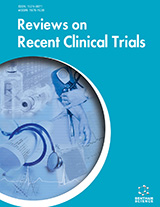Abstract
Adenoidal hypertrophy is probably the most frequent pathology in the pediatric population. This disorder manifests with several symptoms such as bilateral nasal obstruction, rhinorrhea, cough, snoring, hyponasal speech, hypopnea, and sleep apnea. When tonsillar hypertrophy is also present, obstructive sleep apnea syndrome can manifest. To date, nasal endoscopic examination is the standard technique to diagnose and estimate adenoid mass. Adenotomy is considered the surgical treatment of choice to resolve nasopharyngeal obstruction due to adenoidal hypertrophy. At present, several pitfalls of adenotomy (i.e., alteration of the immunological system, postoperative bleeding, and recurrence of adenoids) are object of criticism. For this reason, some researchers have tested the efficacy of topical nasal steroids in decreasing the severity of nasal symptoms and adenoidal mass. Herein, we review the literature on conservative treatments including also our personal experience.
Keywords: Adenoidal hypertrophy, adenoid pad, adenotomy, steroids, nasal steroids
Reviews on Recent Clinical Trials
Title: Can Adenoidal Hypertrophy be Treated with Intranasal Steroids?
Volume: 5 Issue: 2
Author(s): Marco Berlucchi and Michele Sessa
Affiliation:
Keywords: Adenoidal hypertrophy, adenoid pad, adenotomy, steroids, nasal steroids
Abstract: Adenoidal hypertrophy is probably the most frequent pathology in the pediatric population. This disorder manifests with several symptoms such as bilateral nasal obstruction, rhinorrhea, cough, snoring, hyponasal speech, hypopnea, and sleep apnea. When tonsillar hypertrophy is also present, obstructive sleep apnea syndrome can manifest. To date, nasal endoscopic examination is the standard technique to diagnose and estimate adenoid mass. Adenotomy is considered the surgical treatment of choice to resolve nasopharyngeal obstruction due to adenoidal hypertrophy. At present, several pitfalls of adenotomy (i.e., alteration of the immunological system, postoperative bleeding, and recurrence of adenoids) are object of criticism. For this reason, some researchers have tested the efficacy of topical nasal steroids in decreasing the severity of nasal symptoms and adenoidal mass. Herein, we review the literature on conservative treatments including also our personal experience.
Export Options
About this article
Cite this article as:
Berlucchi Marco and Sessa Michele, Can Adenoidal Hypertrophy be Treated with Intranasal Steroids?, Reviews on Recent Clinical Trials 2010; 5 (2) . https://dx.doi.org/10.2174/157488710791233590
| DOI https://dx.doi.org/10.2174/157488710791233590 |
Print ISSN 1574-8871 |
| Publisher Name Bentham Science Publisher |
Online ISSN 1876-1038 |
 13
13
- Author Guidelines
- Bentham Author Support Services (BASS)
- Graphical Abstracts
- Fabricating and Stating False Information
- Research Misconduct
- Post Publication Discussions and Corrections
- Publishing Ethics and Rectitude
- Increase Visibility of Your Article
- Archiving Policies
- Peer Review Workflow
- Order Your Article Before Print
- Promote Your Article
- Manuscript Transfer Facility
- Editorial Policies
- Allegations from Whistleblowers


























